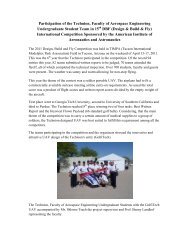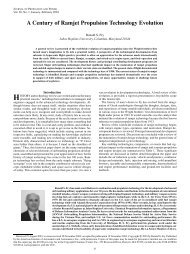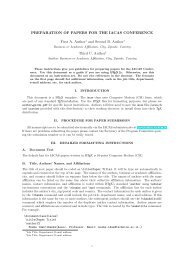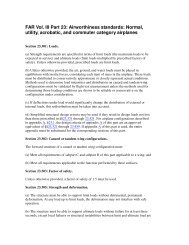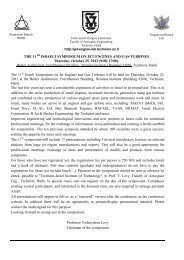Cargo Airships Prospective - Faculty of Aerospace Engineering
Cargo Airships Prospective - Faculty of Aerospace Engineering
Cargo Airships Prospective - Faculty of Aerospace Engineering
You also want an ePaper? Increase the reach of your titles
YUMPU automatically turns print PDFs into web optimized ePapers that Google loves.
Figure 1. World Air <strong>Cargo</strong> Traffic Forecast (Boeing World Air <strong>Cargo</strong> Forecast 2010-2011) [1] . World's<br />
constantly growing GDP and population over the last century, assures constantly growing need for cargo<br />
transportation.<br />
Many remote communities, oil platforms and wind turbine sites are served today with non<br />
reliable network <strong>of</strong> ground transportation or with very expensive airborne means. Process <strong>of</strong><br />
transferring the needed equipment, supplies and commodities to the site, in the needed<br />
quantities, can take therefore several days or even weeks and cost a fortune. Roads and rail<br />
cannot be easily constructed, due to huge cost <strong>of</strong> transport network establishment in the<br />
remote areas, because <strong>of</strong> topographical and weather limitations, or just because <strong>of</strong> insufficient<br />
financial justification for such endeavor. Airstrip or a heliport at the site is a plausible option<br />
in most cases, but due to high operational cost <strong>of</strong> aircraft and relatively small payload volume<br />
they can take, it is not the best solution for large cargo hauling. This is the playground for the<br />
cargo airship. While it is much slower than conventional fixed wing aircraft, airship can carry<br />
the same payload for a fraction <strong>of</strong> the cost and can be designed to operate without any special<br />
infrastructure in the delivery site. It is closer by operational costs to ground vehicles, but<br />
unlike them, it's not restricted by terrain obstacles and lacks the need <strong>of</strong> roads and rails.<br />
Airship can be designed in such way, that the cargo would be underslung beneath its gondola,<br />
allowing it to transport oversized payloads in one piece (for example wind turbine blade), to<br />
inaccessible and remote location, thus simplifying the logistics and allowing high cost<br />
reduction. Insufficient ground transportation network, in developing areas or in countries with<br />
large territories, could benefit from airship type <strong>of</strong> transportation as well.<br />
Figure 2. Airship could be very much handy in such cases








